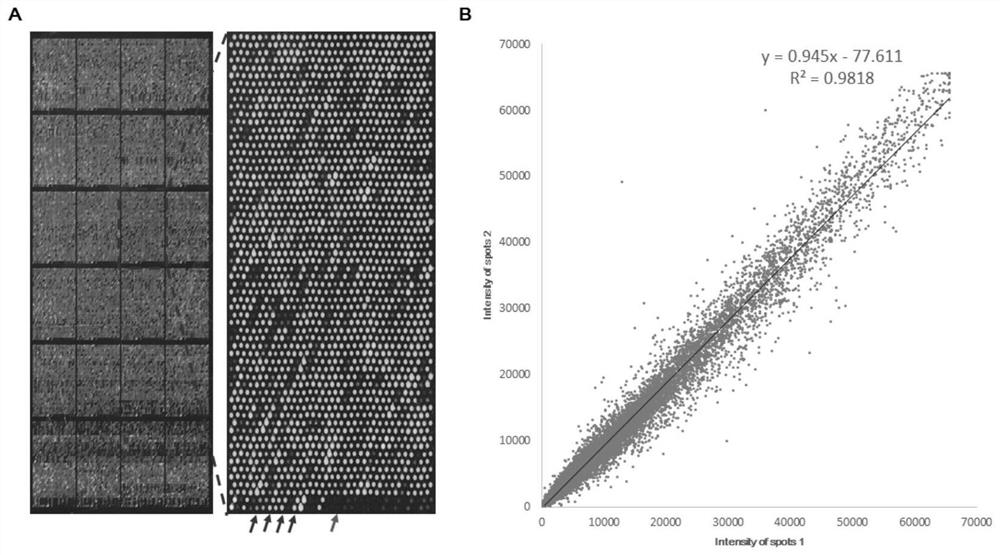Biomarker for detecting autoantibodies with characteristics of different syndromes of hashimoto thyroiditis and application of biomarker
A technology of Hashimoto's thyroiditis and biomarkers, applied in the fields of serum antibody group and immunology technology
- Summary
- Abstract
- Description
- Claims
- Application Information
AI Technical Summary
Problems solved by technology
Method used
Image
Examples
Embodiment 1
[0041] Example 1. Screening of autoantibodies characteristic of different syndromes of Hashimoto's thyroiditis by protein chip
[0042] 1. Source of serum samples
[0043] From January 2017 to December 2019, venous serum samples were collected from the First Affiliated Hospital, the Third Affiliated Hospital of Henan University of Traditional Chinese Medicine, and the First Affiliated Hospital of Zhengzhou University from outpatient and inpatient newly diagnosed patients with untreated Hashimoto's thyroiditis. Fifteen patients with different syndromes of Hashimoto’s thyroiditis (5 cases each with liver depression and qi stagnation syndrome-normal thyroid function, yin deficiency and fire hyperactivity syndrome-hyperthyroidism, spleen and kidney yang deficiency syndrome-hypothyroidism) were selected as HuProt. TM There was no statistical difference in the gender and age of the samples detected by the proteome chip in each group.
[0044] The venous serum samples of 5 normal (h...
Embodiment 2
[0094] Example 2. Indirect ELISA experiments verify the screened autoantibodies related to the characteristics of different syndromes of Hashimoto's thyroiditis
[0095] Select relevant autoantibodies TNRC6C, MAP9, and IRF9 in the liver-qi stagnation syndrome group to be verified; relevant autoantibodies PLEKHO2 and NPM3 in the Yin-deficiency fire-excessive syndrome group; , through the indirect ELISA experiment to detect the content of the above-mentioned related autoantibodies in a large sample, and verify the specificity and sensitivity of the related autoantibodies as biomarkers for detecting the characteristics of different syndromes of Hashimoto's thyroiditis.
[0096] 2.1 Source of serum samples
[0097] The required sample size was estimated using PASS 15.0 software. According to the needs of this study, the sample size of the Hashimoto’s thyroiditis patient group is twice that of the normal control group, according to α=0.05, 1-β=0.90, the lowest syndrome type p1 of ...
PUM
 Login to View More
Login to View More Abstract
Description
Claims
Application Information
 Login to View More
Login to View More - R&D
- Intellectual Property
- Life Sciences
- Materials
- Tech Scout
- Unparalleled Data Quality
- Higher Quality Content
- 60% Fewer Hallucinations
Browse by: Latest US Patents, China's latest patents, Technical Efficacy Thesaurus, Application Domain, Technology Topic, Popular Technical Reports.
© 2025 PatSnap. All rights reserved.Legal|Privacy policy|Modern Slavery Act Transparency Statement|Sitemap|About US| Contact US: help@patsnap.com



